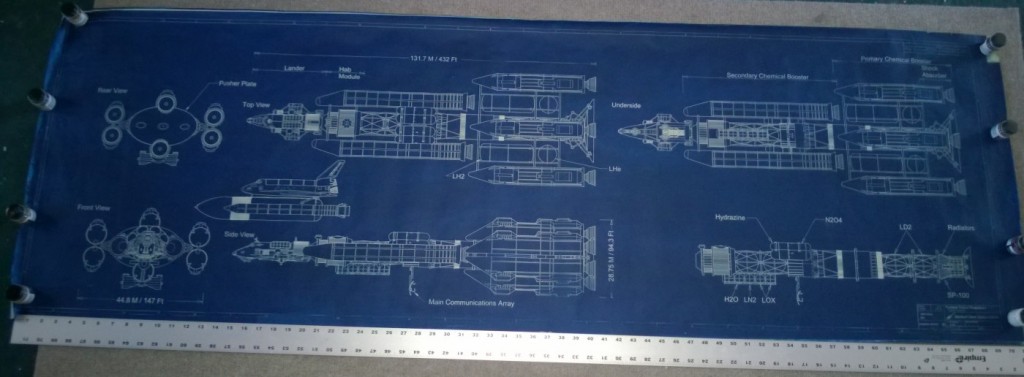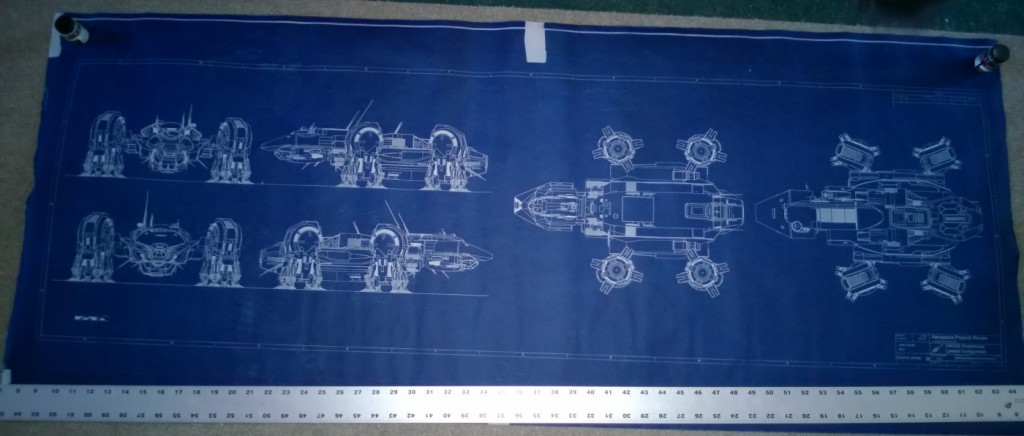I’ve made a number of science fictional CAD models for Fantastic Plastic. Wonderfest, an annual hobby convention in Louisville, Kentucky, is coming up at the end of the month, and Fantastic Plastic is going to set up there. A while back I thought it might be interesting to take some of the CAD models I’ve created for current and forthcoming Fantastic Plastic model kits, specifically the Helicarrier, the Prometheus and the Messiah, and create 2D layout drawings… and then make cyanotype blueprints. Further, the blueprints would be at the same scale as the kits.
The end results? A moderately sized Helicarrier blueprint, two big Prometheus sheets (one showing the craft in flight, the other showing it in landed configuration), and one enormous Messiah blueprint, a full six feet long.
I don’t know if there is a market for such things. The Prometheus and the Messiah in particular are just gigantic. Were I to really try to commercialize them, I’d probably scale them down to at least 2/3 and more likely 1/2 the current size. Still, creating them was not a minor effort… so what the heck. I’m going to make them available for a limited time. Yes, they’re pricey. But they’re also *huge.* And a pain to make. And there won’t be very many of them on the entire planet (right now, two copies each of the Helicarrier and the Messiah; a grand total of one of the Prometheus prints).
These will be available for a two-week period, starting now. If some dark miracle occurs and I sell a hundred of them within that span, then, great! But however many, at the end of the two weeks, that’s it. All done, no more. I will total them up, and hand notate each one as numbered limited edition (“1 of 5,” or whatever, based on the order that orders come in) plus I’ll initial each one. Because why not.
Feel free to order as many of each as you want. Don’t forget postage… and don’t forget that with this one-time postage you can order as many *other* cyanotype prints as you like.
Prometheus prints:
Helicarrier:






















